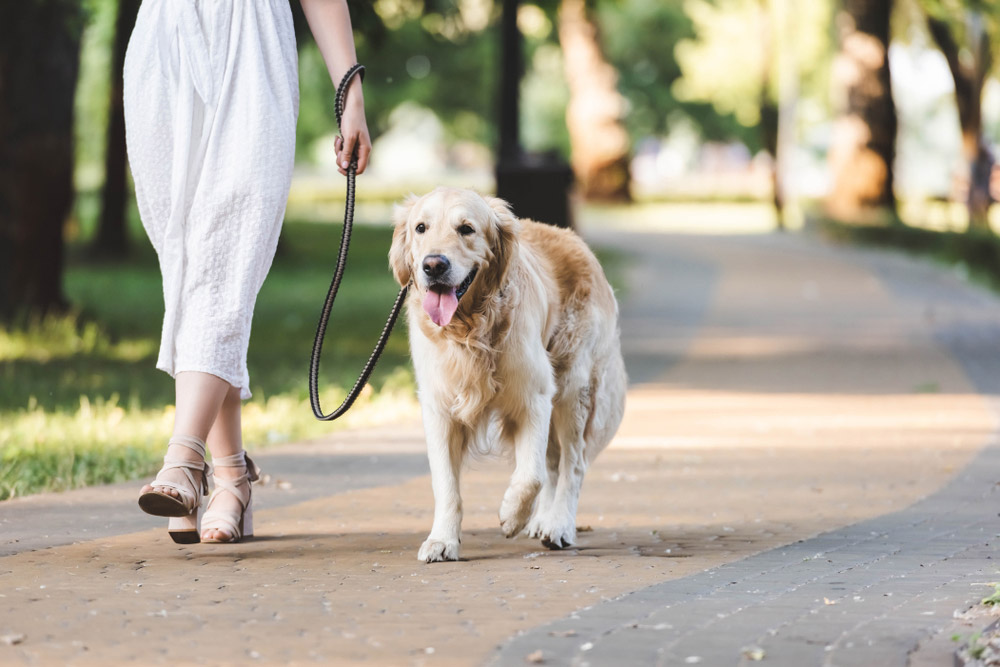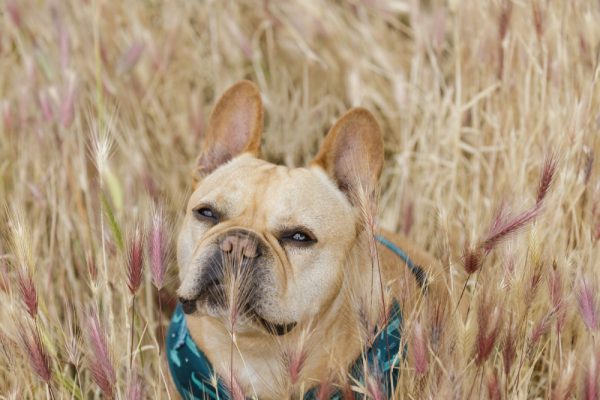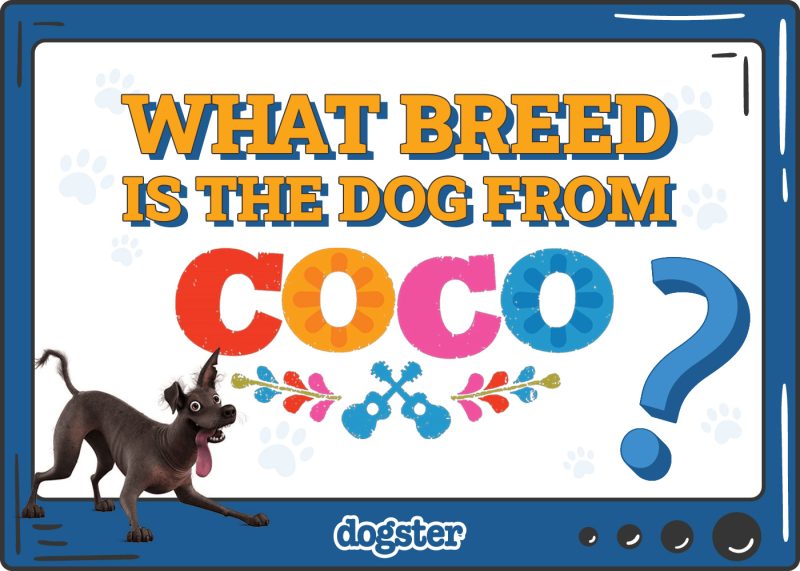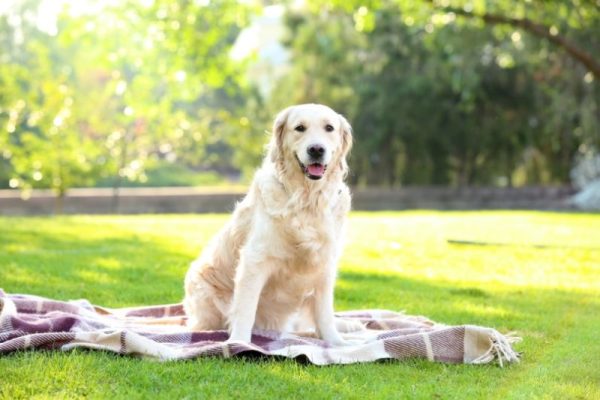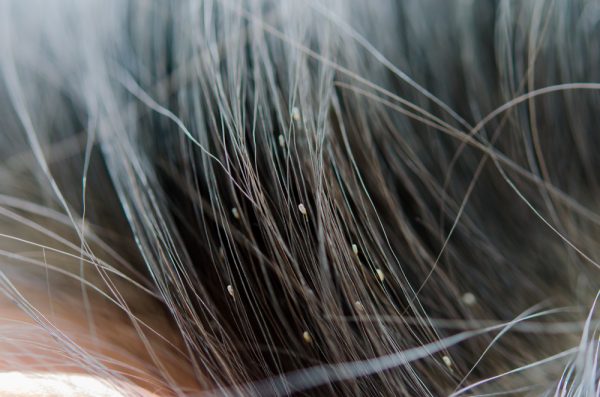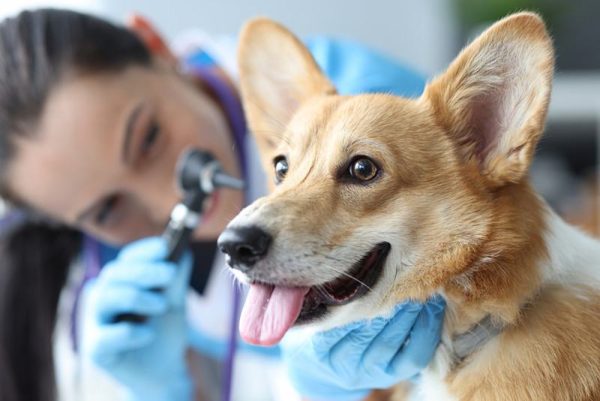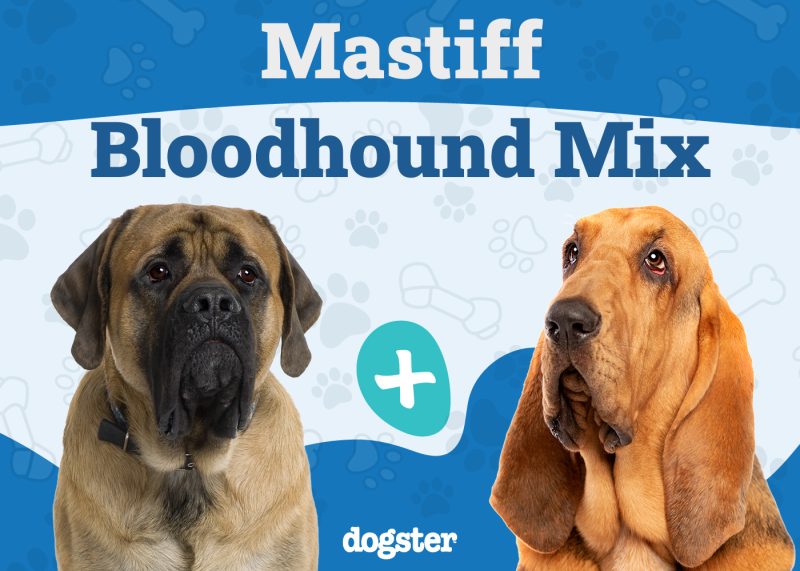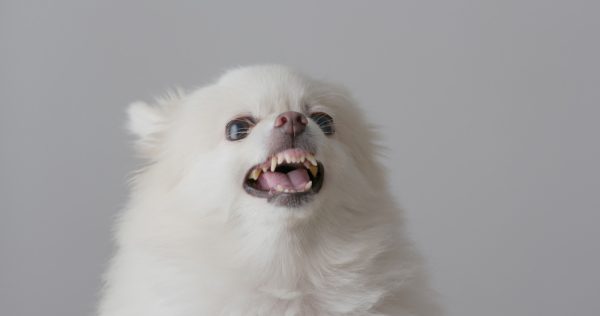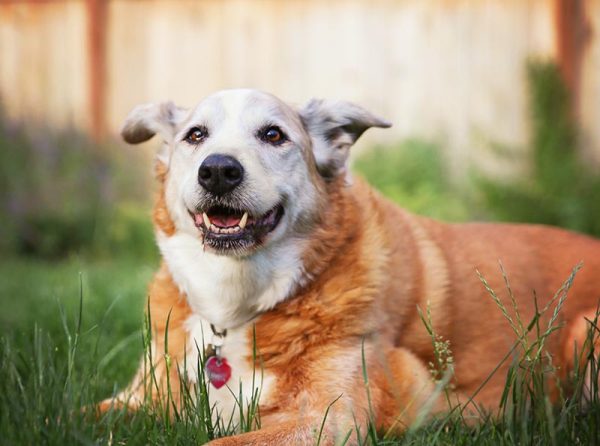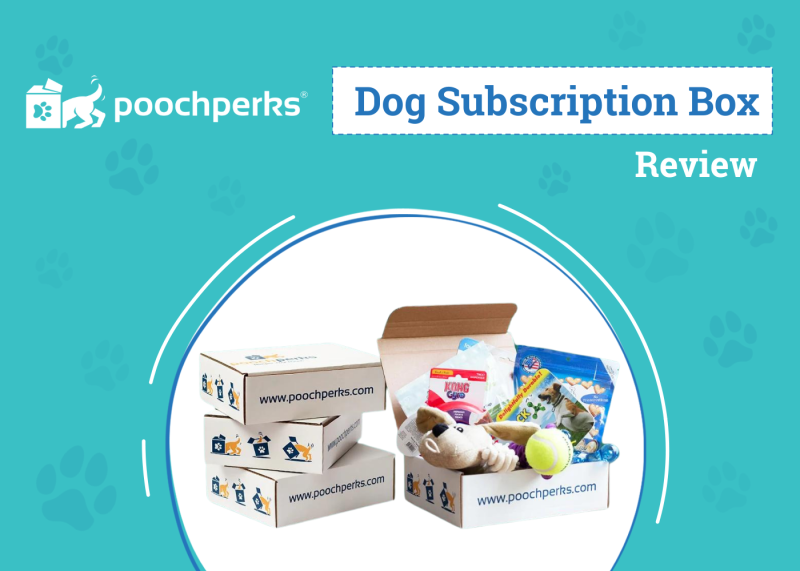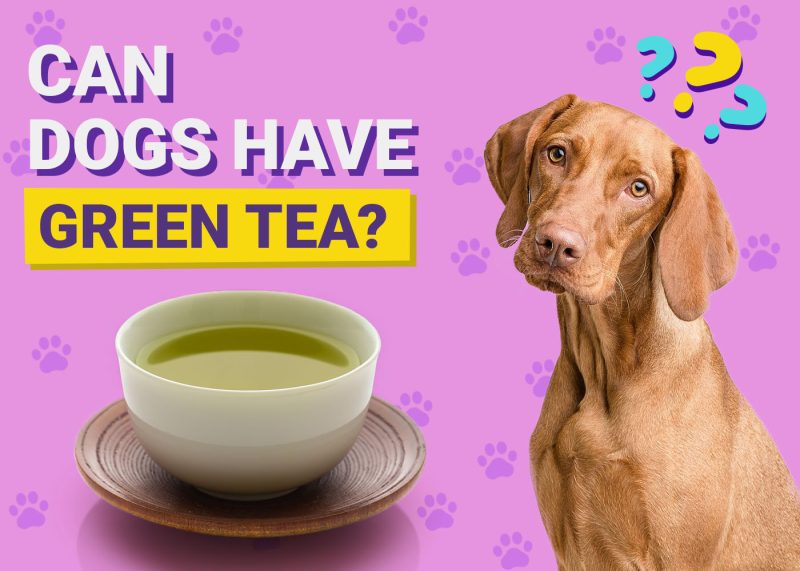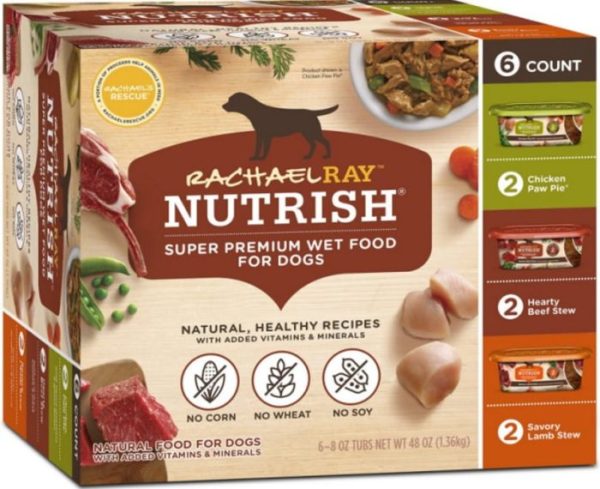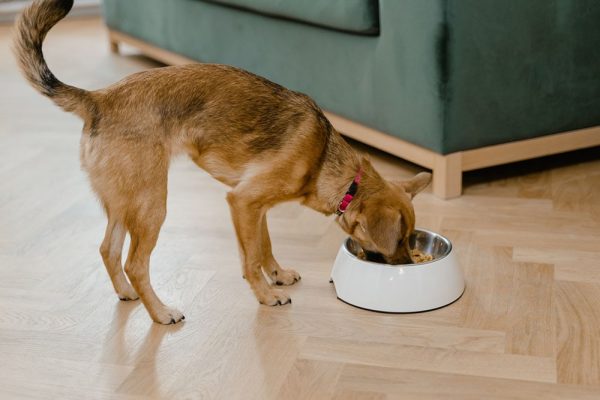Owning a dog for the first time can be exciting and a bit scary. After all, if you’ve never owned a dog before, you can’t know exactly what to expect. You can read about how to take care of a dog and train them properly, but nothing really prepares you for owning your first dog like owning a dog.
Because first-time dog owners have so much to learn, they often do best with breeds suitable for beginners. Dogs that are more forgiving of socialization and training mistakes allow new dog owners to figure things out without the risk of serious consequences.
Let’s take a look at exactly what makes a dog breed good for first-time owners. Then, we’ll take a look at the best dog breeds for new owners.

What Makes a Dog Breed Good for First-Time Owners?
There are tons of factors that first-time dog owners may be concerned about when choosing a dog. However, in our opinion, some factors are considerably more important for first-time owners. These factors include the following:
- Family Friendliness: How affectionate the breed is with family members, other pets or dogs, and young children.
- Trainability: Refers to how trainable the breed is; breeds that are eager to please are better for first-time owners compared to breeds that are more self-willed or stubborn.
- Health Issues: Breeds with minimal breed-specific ailments are the best for first-time owners.
- Moderate Energy Levels: Breeds that have a moderate exercise intensity and manageable mental stimulation needs are preferred over those with stringent exercise and stimulation requirements.
- Adaptability: Breeds that can easily adapt to your environment and routine are best for first-time owners.
Ideally, you’d want a dog breed that ticks most, if not all, of the requirements listed above. However, a few other factors might influence your opinion as well.
- Legality: Some breeds might be restricted or illegal to own where you reside. Fortunately, though, most breeds recommended for first-time owners don’t fall into this category.
- Noise: Breeds that bark incessantly might be cause for concern if noise pollution is a big deal for you (for example, if you stay in an apartment).
- Size: Large breeds can be overbearing sometimes. Their transport logistics are not easy to fulfill (some may not fit in a very small vehicle) and their food costs may be considerably higher as well.
- Grooming Needs: Breeds that shed excessively might overwhelm first-time owners.
- Drooling: Another factor that some owners might consider is the amount of drooling the breed is susceptible to.
With these criteria in mind, let’s look at some dog breeds that are suitable for first-time owners.

The 10 Best Dog Breeds for First-Time Owners
1. Labrador Retriever
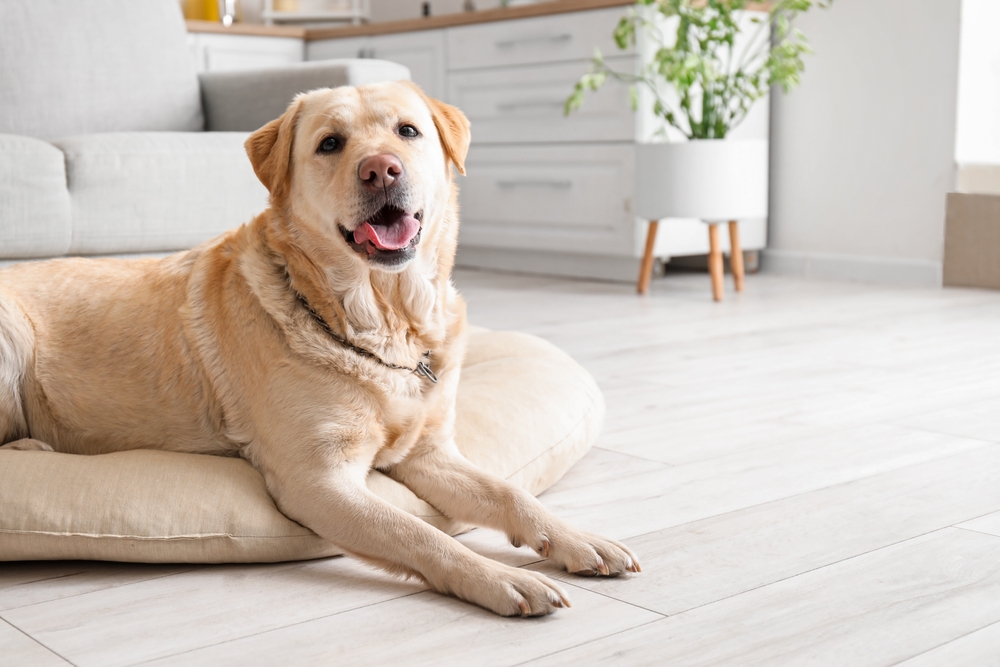
| Key Traits: | Friendly, active, outgoing |
| Personality: | Easily trainable, high energy levels, moderately vocal |
| Grooming: | Moderately high shedding but easy to manage grooming-wise |
Labrador Retrievers are one of the most popular dog breeds in the world for a reason. They’re exceptionally easy to train and very friendly. They tend to have a gentle temperament, making them a great choice for families. In most cases, they’re great for more active families looking for a first dog.
However, their higher energy levels can be a lot to deal with if you aren’t active. Their happy-go-lucky and friendly nature can quickly lead to adoration from many people in the form of treats, which can, unfortunately, lead to an overweight pet if you’re not careful. They also shed quite a bit, so regular brushing is required.
2. Golden Retriever
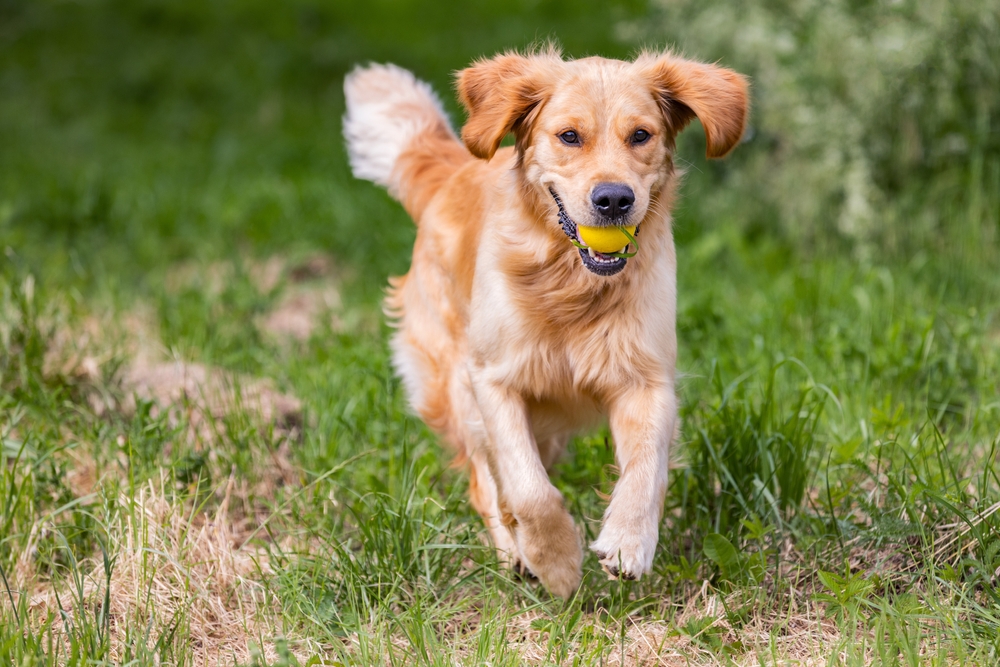
| Key Traits: | Friendly, intelligent, devoted |
| Personality: | Easily trainable, moderate energy levels, minimally vocal |
| Grooming: | Moderately high shedding but easy to manage grooming-wise |
Golden Retrievers are very similar to Labs. In many cases, they tend to be more even-tempered and friendly, though. They’re practically the friendliest dog out there. Most bond very quickly with their families, making them a great choice for those with kids. They’re also less energetic than Labs, but they still require a moderate amount of exercise.
Like many other breeds, they do require regular brushing. They have a thick double coat, but they don’t need to be clipped. In fact, many groomers advise against clipping them. However, they usually do need a “pedicure” of sorts to keep the fur around their paws well-groomed and neat. They are perhaps most popular for being able to make very emotive expressions with their face.
3. Bichon Frise
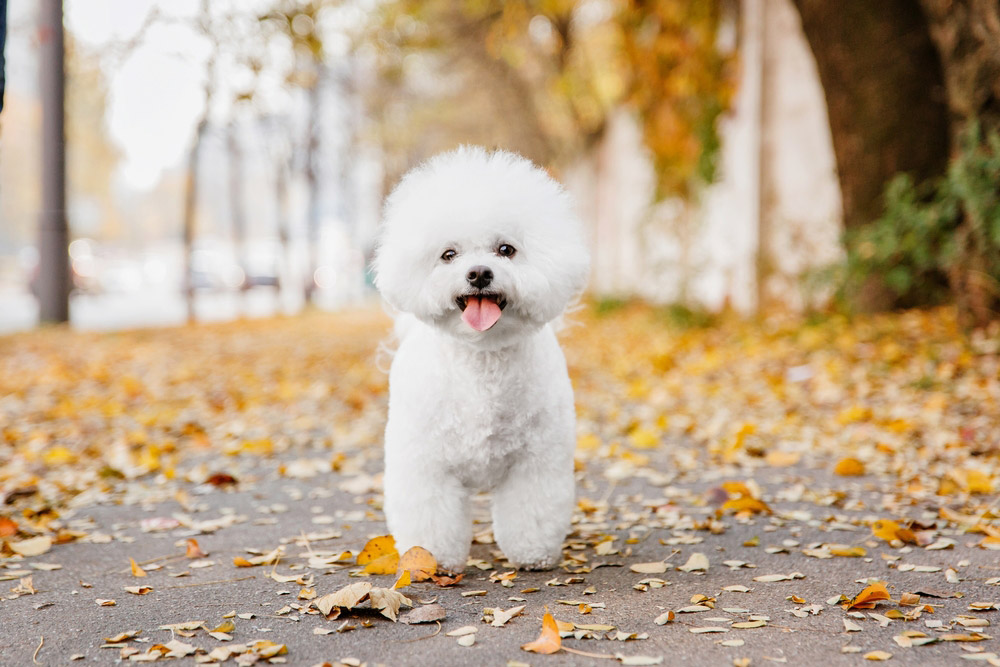
| Key Traits: | Curious, peppy, playful |
| Personality: | Quite trainable, moderate energy levels, somewhat vocal |
| Grooming: | Low shedding but needs near-daily coat grooming assistance |
Bichon Frise are very playful, cheerful little dogs. Because they’re small, they do best for apartment dwellers or those with a more laid-back exercise. Their coat also doesn’t shed, cutting down on the amount of fur that will end up around your house.
Still, these dogs require regular daily brushing to prevent matting. Anecdotal evidence suggests that they’re quite prone to separation anxiety, so they may not be a good choice for owners who are gone for much of the day. Therefore, they’d do best when they can be with someone much of the time.
4. Poodle (Standard/Toy/Miniature)
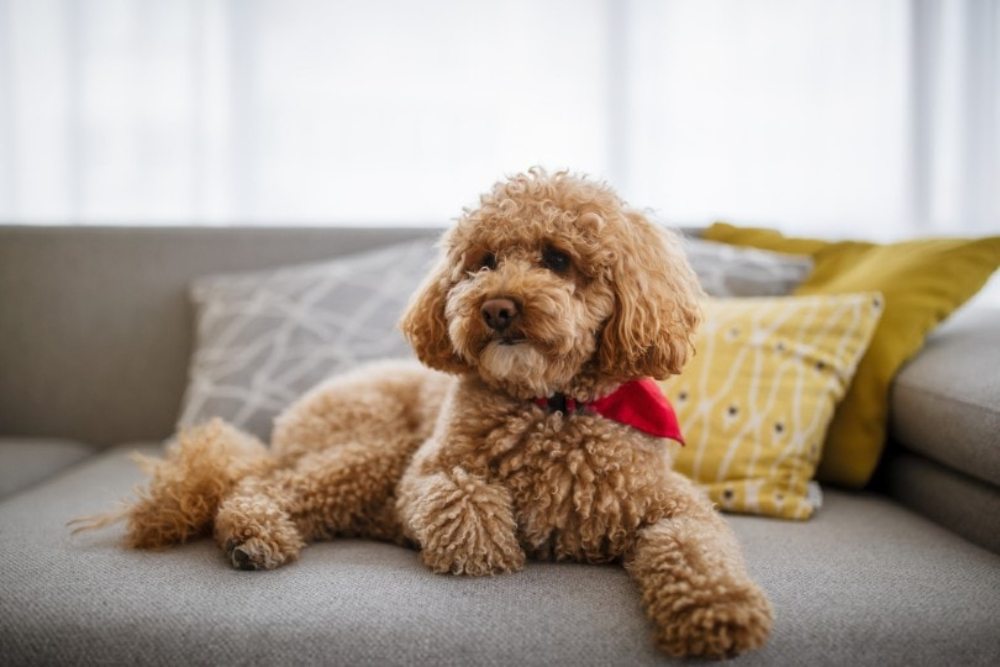
| Key Traits: | Very intelligent, active, self-confident |
| Personality: | Easily trainable, high energy levels, quite vocal |
| Grooming: | Low shedding, needs extensive grooming |
Poodles can be good for first-time owners if you’re willing to put in a bit more work. They come in three different sizes, and there aren’t many temperament differences between sizes. In many cases, you can choose whichever size works best for your lifestyle and space.
These dogs don’t shed much, but they do require grooming. You may need to brush them as much as every day. They’re relatively active, so they do best when their owners are pretty active, too.
Their intelligence and exercise level can make it harder for them to work than other dogs, though. Yes, they’re highly trainable. However, if you don’t keep them busy, they will keep you busy.
5. Whippet
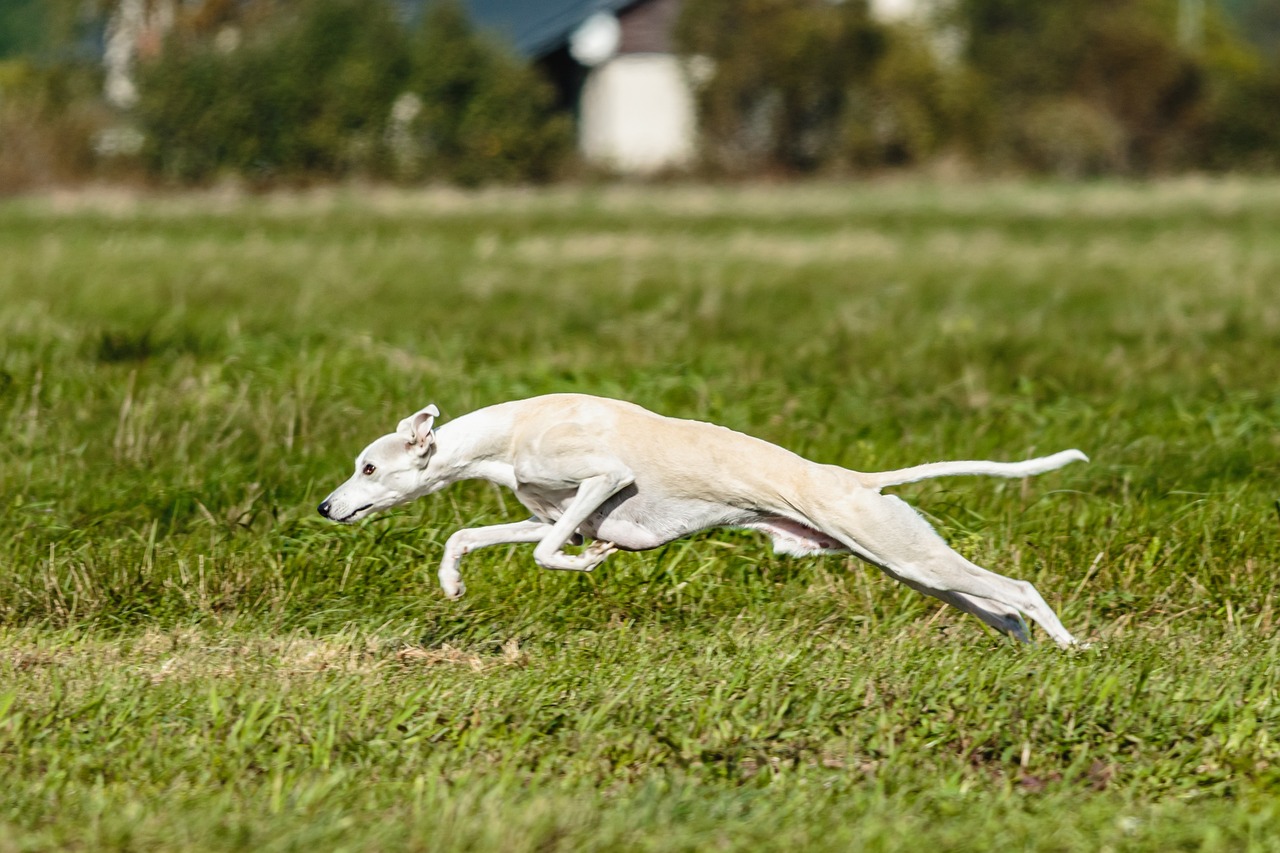
| Key Traits: | Calm, playful, affectionate |
| Personality: | Moderately challenging to train, high energy levels, extremely quiet |
| Grooming: | Low shedding, very low grooming requirements |
Whippets are sighthounds, which means that they’re more active. But they’re small and not nearly as active as other sighthounds. They tend to have bursts of energy, which may involve a few laps around the house. However, they’re often inactive for long periods of time. They can be very cuddly dogs.
Whippets do have a strong prey drive, though. We recommend not letting them off-leash for this reason.
6. Beagle
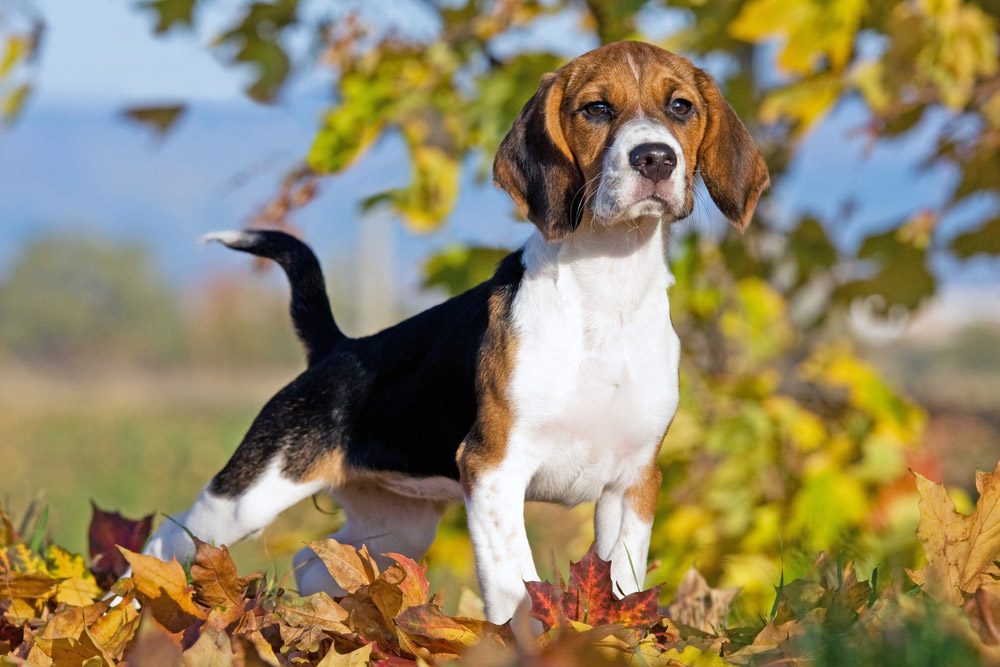
| Key Traits: | Friendly, curious, prone to wandering |
| Personality: | Moderately challenging to train, high energy levels, quite vocal |
| Grooming: | Moderate shedders, moderate grooming requirements |
Beagles may have been bred as hunting dogs for a long time. However, they can also make great companion animals. They’re curious and playful. Most are pretty laid back, though younger Beagles can require a significant amount of exercise. They can also be pretty vocal, so they may not be the best choice for apartments.
Their strong sense of smell means that they can become easily distracted. They require a fenced-in yard for safe exercise. Otherwise, they may find a scent trail and wander off. Their wanderlust potential is very high, and they may spend most of their time during a walk with their nose pinned to the ground, exploring the many scents they’re exposed to.
7. Miniature Schnauzer
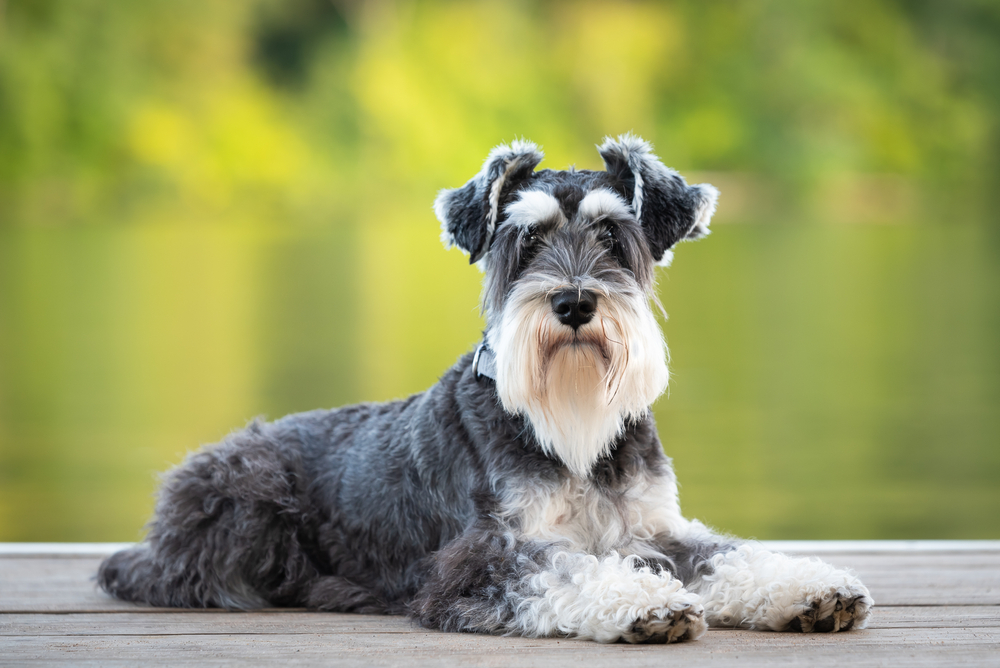
| Key Traits: | Smart, friendly, obedient |
| Personality: | Highly trainable, moderate energy levels, very vocal |
| Grooming: | Moderately high shedding, high grooming requirements |
Miniature Schnauzers are a great option for someone who is looking for a breed that’s a bit different. They are loyal and protective, not the typically happy-go-lucky dogs that populate this list. They’re easy to train, though, and they can get along with children when properly socialized.
They have a wiry coat that does require some regular brushing and professional grooming on a frequent basis. When properly cared for, they don’t leave much fur around the house, though.
8. Pembroke Welsh Corgi

| Key Traits: | Affectionate, smart, alert |
| Personality: | Relatively highly trainable, high energy levels, quite vocal |
| Grooming: | Moderately high shedding, moderate grooming requirements |
Pembroke Welsh Corgis are known for their exceptionally short legs and very round bodies. They look like fat sausages, even when not necessarily overweight. These herding dogs are very eager to please and intelligent, making them very easy to train. Still, professional classes are recommended to teach you how to train them.
They are very active despite their smaller size. It’s important to remember that these are working dogs, not lap dogs. They need regular exercise daily. These dogs are natural herders and often don’t need to be trained to learn how to herd.
9. Yorkshire Terrier
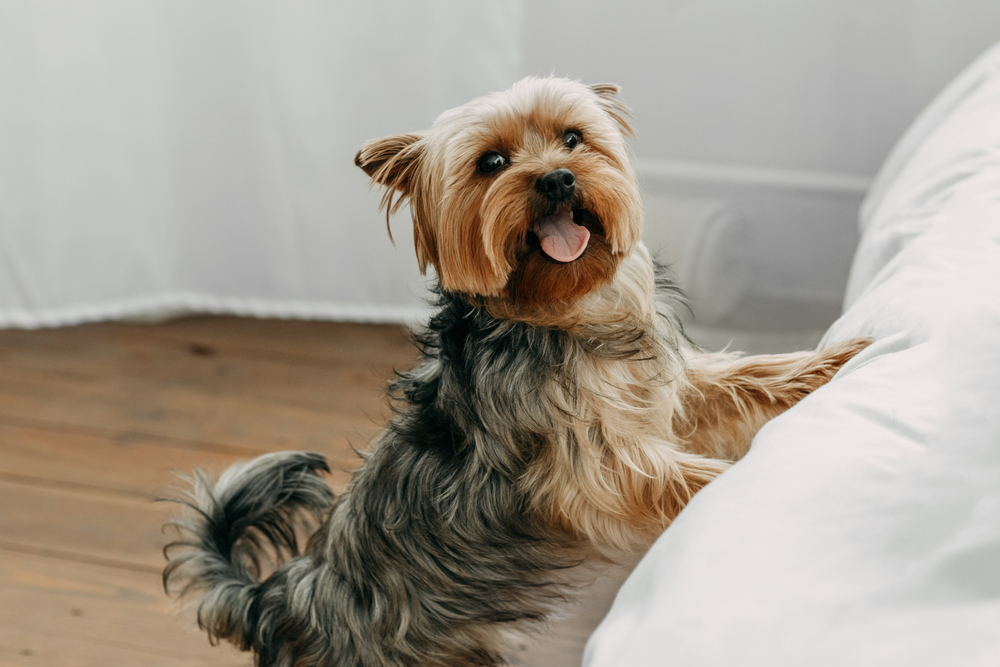
| Key Traits: | Affectionate, tomboyish, sprightly |
| Personality: | Relatively highly trainable, high energy levels, quite vocal |
| Grooming: | Low shedding, very high grooming requirements |
An option for those with smaller living spaces, such as an apartment, is the Yorkshire Terrier, also known as the Yorkie. These small dogs are full of personality and get along extremely well with children. They may not be the best fit with other dogs. However, they can definitely learn to get along with them.
The Yorkie is considered moderately brachycephalic (flat-faced), and therefore, they might be prone to some of the respiratory issues that all brachycephalic breeds are prone to. However, given how they are only moderately brachycephalic, they tend to fare better than breeds that are considered extremely brachycephalic.
10. Crossbreeds
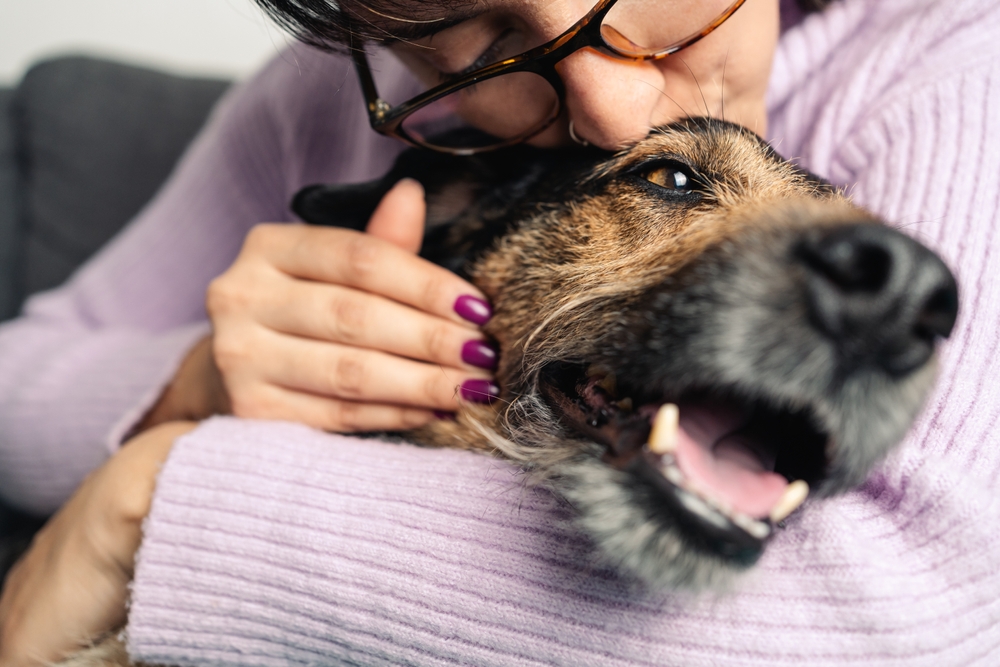
| Key Traits: | Often already trained and friendly, used to other dogs |
| Personality: | Often amicable |
| Grooming: | Often moderately low |
Finally, if you can’t settle on a breed, it’s worth keeping in mind that many crossbred dogs also make fantastic pets. In fact, the genetic variance offered by crossbreeds usually results in dogs that have fewer breed-specific issues.
Another point to consider is that it’s often very easy to obtain a friendly, house-trained, social crossbred dog from a shelter. These dogs are often already neutered (spayed or castrated), vaccinated, and leash-trained. These traits can save new owners a ton of resources, both financial and time-oriented resources, as they’re pretty much “ready” to offer you a ton of affection and companionship.
Therefore, sometimes your first memorable pup might just be waiting for you at your local humane shelter!
Final Thoughts
There are tons of dogs out there that may work well for a first-time dog owner. Generally, we recommend choosing a dog that fits you, not necessarily what someone claims is the “best dog breed ever.” That means selecting a breed that is generally easy to train, matches your activity level, and can get along with everyone in your household.
When in doubt, research more about the breeds that interest you.
In the end, it’s important to understand that there isn’t a “perfect” breed for anyone. Once you’ve found a breed that matches almost everything you want, you can proceed to figure out what you’ll need to prepare before introducing them to your home. Keep in mind that this is a decision that will impact your life for well over a decade in most cases, and therefore, you shouldn’t rush the adoption process.
See also:
- How to Stop a Dog from Begging for Food: 7 Tips That Work
- Skijoring with Dogs: What It Is & How to Get Started with the Sport
Featured Image Credit: LightField Studios, Shutterstock

